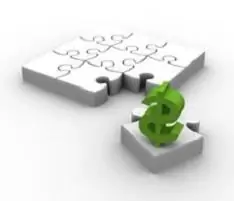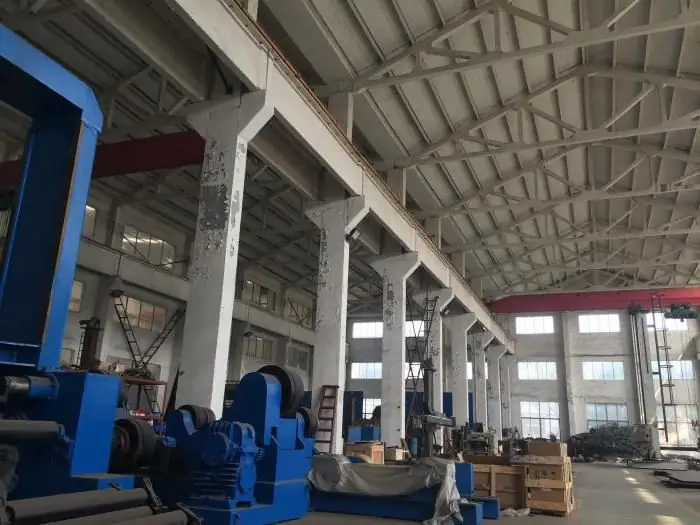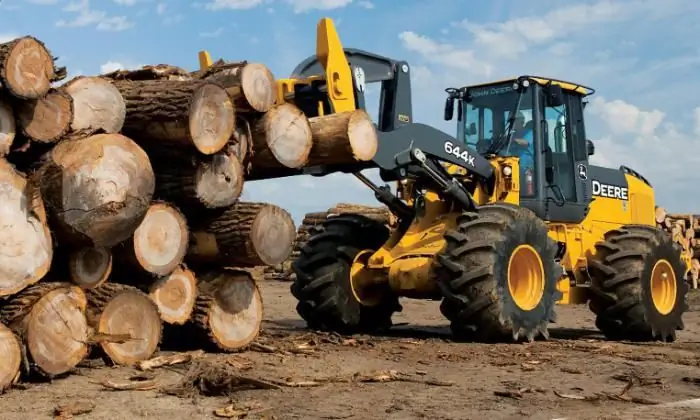2026 Author: Howard Calhoun | [email protected]. Last modified: 2025-01-24 13:10:28
The obsolescence of fixed assets characterizes the depreciation of any type of fixed assets. These can be: production equipment, vehicles, tools, heat and power networks, gas pipelines, buildings, household equipment, bridges, highways and other structures, computer software, museum and library collections.
Fixed assets are obsolete, but not worn out physically. Obsolescence - obsolescence due to the appearance of their analogues, more competitive: technologies, equipment, transport, etc.

Reasons for obsolescence
The obsolescence of fixed assets begins to play an important role in production costs. There are several reasons for this:
1. The production of the same types of fixed assets becomes cheaper. It happens like this. Manufacturers are trying to reduce production costs, use other technologies, economical materials. As a result, the price becomes lower, for example, for the equipment that they produce. BUTthe same equipment purchased earlier from the same manufacturer becomes morally obsolete. Because it cost more. The production costs of the products produced by it turned out to be higher. Since the depreciation rate takes into account the initial cost of fixed assets. When carrying out an accounting revaluation of fixed assets, the loss will be the difference in prices.
2. Updating technologies or releasing improved equipment analogues. They are faster; have better accuracy, are more economical, require fewer repairs. And most importantly, they allow you to produce products at a low cost. With the development of technical developments, the products of the engineering industry, for example, are updated every 5-6 years. In computer production, an update occurs every 2-3 years. Using outdated technology is unprofitable. The business owner incurs losses from production costs. And again, losses during the revaluation of capital goods, since depreciation does not cover their cost.
3. Social cause of obsolescence. When fixed assets do not meet the level of safety or environmental safety accepted in society. Sometimes there is no need to replace fixed assets. For example, in case of obsolescence, the building ceases to comply with new sanitary standards or planning projects. Then it needs to be upgraded. Or do a major overhaul.

Why consider depreciation
The success of entrepreneurial activity directly depends on the depreciation of fixed assets. Wear determines:
- issue volume;
- qualityproducts;
- market segment size;
- costs in product cost.
By taking into account and controlling wear and tear, you successfully manage your business. After all, there is still physical wear and tear.
Physical depreciation of fixed assets
Fixed assets fail sooner or later. During their work, a whole range of conditions apply:
- humidity;
- temperature;
- load in use;
- equipment operation in several shifts;
- maintenance quality;
Sometimes depreciation can be reduced with a major overhaul, and sometimes fixed assets need to be replaced.

The amount of physical wear and tear is affected by the properties of materials, specified characteristics, and the overall quality of fixed assets.
Depreciation and depreciation
Depreciation - an increase in production costs included in the cost of production, by the rate of depreciation from the cost of fixed assets.
Depreciation charges are accumulated for repair, refurbishment or purchase of fixed assets.
There are norms defined in the state classifier. They set the amount of depreciation for each type of fixed asset.
For each type of fixed assets, the classifier has set a service life. The method, when depreciation is charged according to established norms, is called linear.
Physical and moral depreciation in monetary terms is called depreciation.
How to reduce losses due to moralwear
If fixed assets are used intensively, obsolescence losses will decrease. The intensity of use should pay off fixed assets for the period of their renewal. Use:
- decrease in service life norms;
- increase in wear rates;
- accelerated depreciation.
Track the obsolescence of equipment. They are taken into account in the updated depreciation rates.
What is accelerated depreciation
In order to quickly update fixed assets, accelerated depreciation is widely used in practice. Its meaning is to transfer the cost of fixed assets to the cost of goods or services in shares above the norm.

It is believed that by applying such a policy, the state offers a moderate overstatement of depreciation rates. For example, it is proposed to write off the cost of equipment with a service life of 7 years for almost 5 years.
Don't forget that by applying the accelerated depreciation method, you automatically increase production costs. This reduces the company's profits.
Recommended:
Depreciation and depreciation of fixed assets

How to compensate for the costs that will certainly arise during the restoration of fixed assets, where to get the money to carry out scheduled and other types of repairs? Here we come to the aid of depreciation deductions, specially calculated for such cases
What is depreciation of fixed assets and intangible assets?

The process of accruing depreciation of fixed assets and intangible assets is a very important aspect of accounting in an enterprise. How to calculate depreciation, the management of the enterprise or the entrepreneur decides
Structure and composition of fixed assets. Operation, depreciation and accounting of fixed assets

The composition of fixed assets includes many different assets that are used by the enterprise in its core and non-core activities. Accounting for fixed assets is a difficult task
Posting to fixed assets. Basic accounting entries for fixed assets

The non-current assets of an enterprise play an important role in the production cycle, they are associated with logistics processes, trade, provision of services and many types of work. This type of assets allows the organization to earn income, but for this it is necessary to carefully analyze the composition, structure, cost of each object. Constant monitoring is carried out on the basis of accounting data, which must be reliable. Basic postings on fixed assets are typical
Sale of fixed assets: postings. Accounting for fixed assets

Material base, technical equipment of any enterprise depends on the structure of the main assets. They are an integral part of the production process, they are used in the implementation of all types of economic activity: the provision of services, the performance of work. The use of BPF with maximum efficiency is possible with proper planning of their operation and timely modernization. For a comprehensive analysis of this asset, it is necessary to correctly reflect it in all types of accounting

